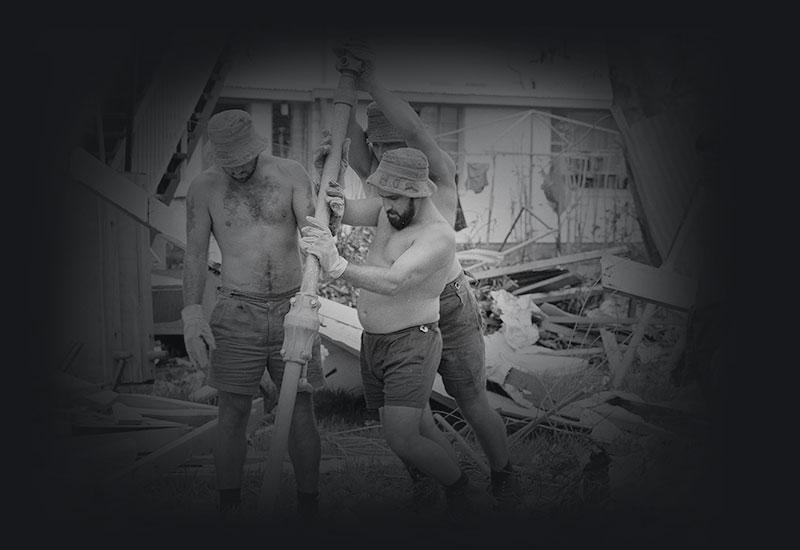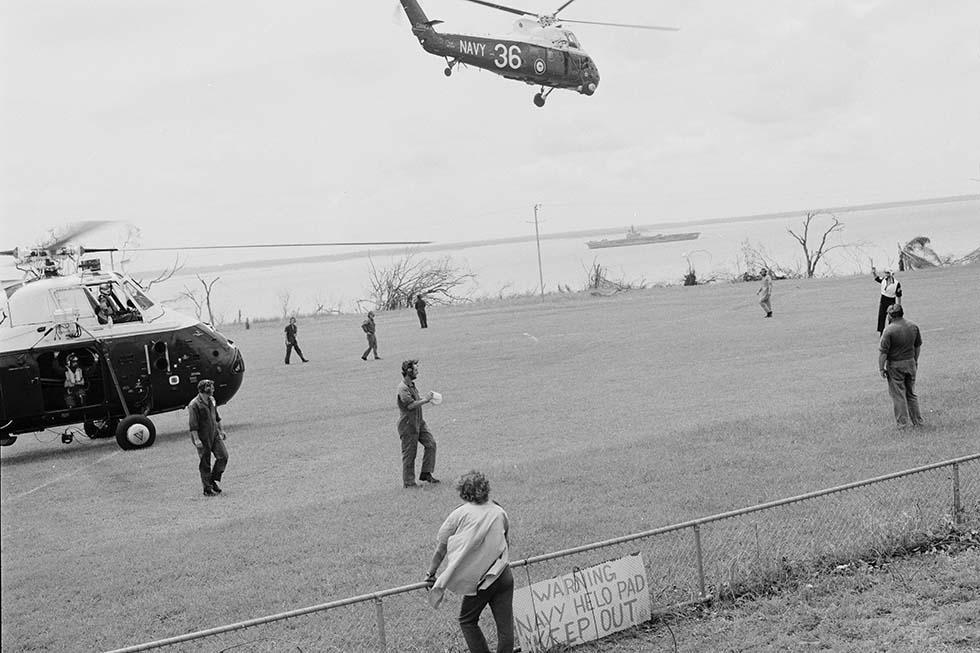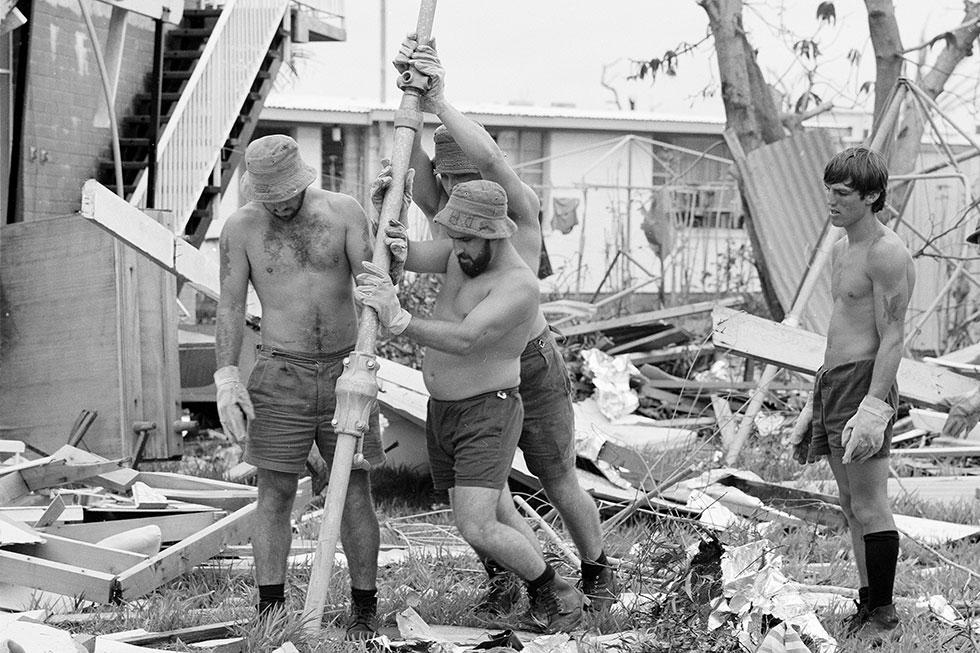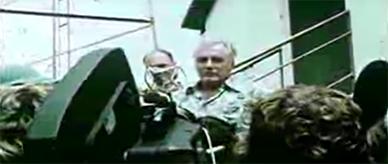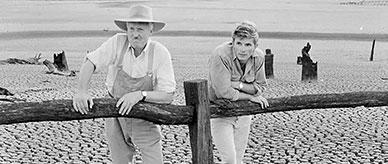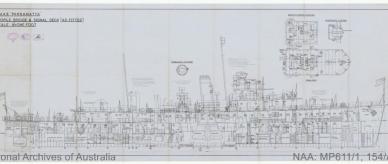In early January this year, over a thousand Australians were evacuated from fire-stricken Mallacoota by the Royal Australian Navy (RAN).
Barely visible through the dense bushfire smoke, HMAS Choules and MV Sycamore lay off the Victorian coast as evacuees were shuttled aboard on smaller boats.
At the same time, HMAS Adelaide put to sea to offer mobile disaster relief. Defence force bases prepared to temporarily house bushfire refugees, and 3000 reservists were called up to help maintain essential services through the crisis.
Darwin faced a comparable disaster in 1974, when Cyclone Tracy devastated the city early on Christmas Day. Most buildings were destroyed or seriously damaged, 71 people were killed and over half of Darwin's 47,000 residents were left homeless.
As Bill and Boyd’s popular 1975 song lamented, 'Santa never made it to Darwin' – but the navy did. Fresh from a disaster-preparedness exercise in Jervis Bay, the RAN quickly mounted Operation Navy Help Darwin, the largest peacetime deployment in its history.
Operation Navy Help Darwin
A task force of 13 RAN vessels sailed for Darwin from Sydney, Brisbane and Townsville.
Urgent telephone calls and media alerts ordered sailors to return to their ships on Christmas Day, while hundreds more volunteered to embark with them.
Working non-stop through Boxing Day, over 300 tonnes of supplies were put aboard at Garden Island alone. As the superintendent of stores reported, 'there was an air of urgency and cooperation the like of which I have not experienced since wartime'.
With little shelter or infrastructure remaining, and facing the risk of disease outbreaks, over 35,000 Darwin residents were evacuated by 31 December.
Three RAN shore bases on Sydney Harbour – HMAS Watson, Penguin and Kuttabul – briefly housed 206 of the evacuees. 'They were in a state of shock', reported a navy social worker, 'and were anxious to move on to friends and relations as soon as possible'.
Reunited at Kuttabul were Petty Officer Pat Nuss and her Darwin friend Helene Jones, who had been evacuated with 17-month-old son Peter. 'I feared for our lives as the rooms exploded around us', Jones told a Navy News reporter.
The restoration effort
The aircraft carrier HMAS Melbourne arrived off Darwin on New Year's Day, 1975. The flagship for the operation, it was crammed with vehicles, food, fuel and construction materials, as well as seven Wessex helicopters to move vital materials and sailors ashore.
Remaining until 31 January, RAN ships and aircraft provided up to 1200 personnel every day to assist in restoring infrastructure and rebuilding the city.
Their most urgent mission was to remove food that had begun rotting, creating a stench so pungent that sailors had to wear breathing apparatuses.
After reducing the disease risk, navy technicians began restoring electricity and telephone services. Other sailors cleared rubble in three of the worst-affected suburbs: Casuarina, Nightcliff and Rapid Creek.
While valuables found during the recovery were kept safely aboard HMAS Stalwart, Petty Officer Christopher 'Timber' Mills provided another invaluable service: acting as a fill-in DJ on local radio station 8DN.
Visiting the ruined city, Governor-General Sir John Kerr issued a very rare Order of the Day commending 'all members of the Defence Force for their instant response and willing participation in the Darwin relief operations'.

